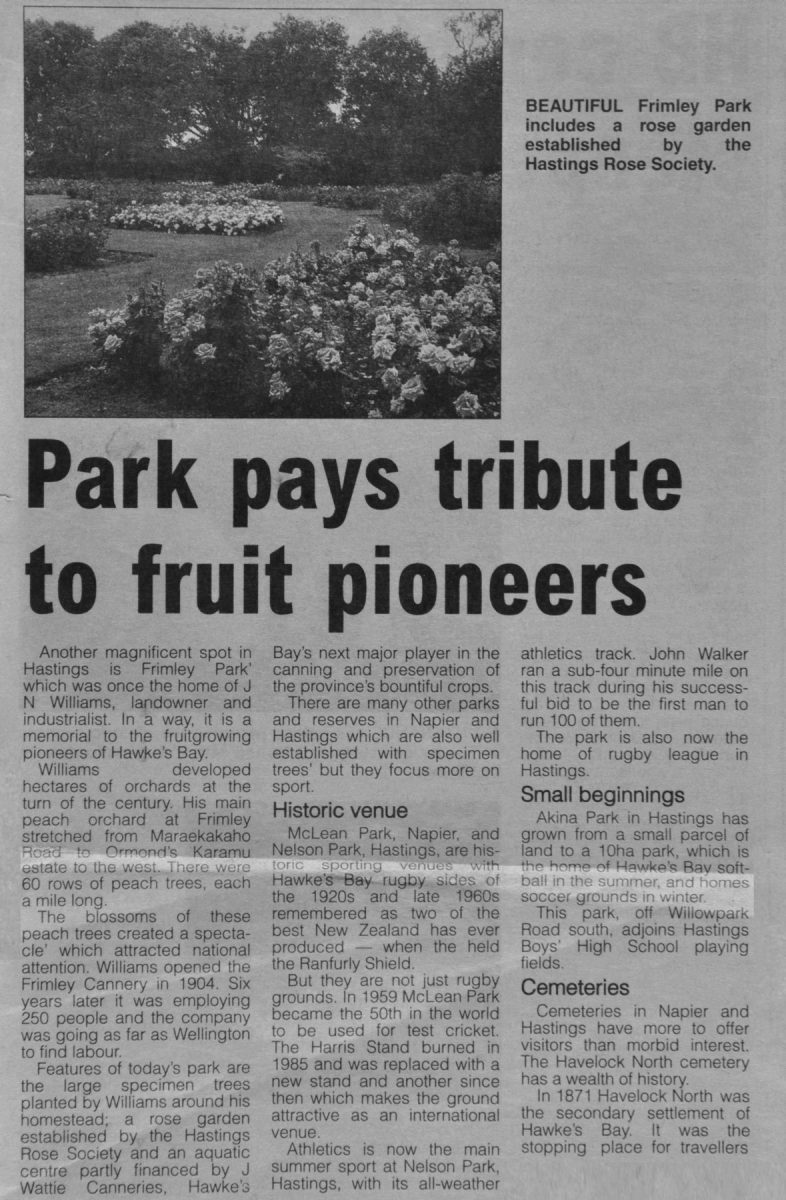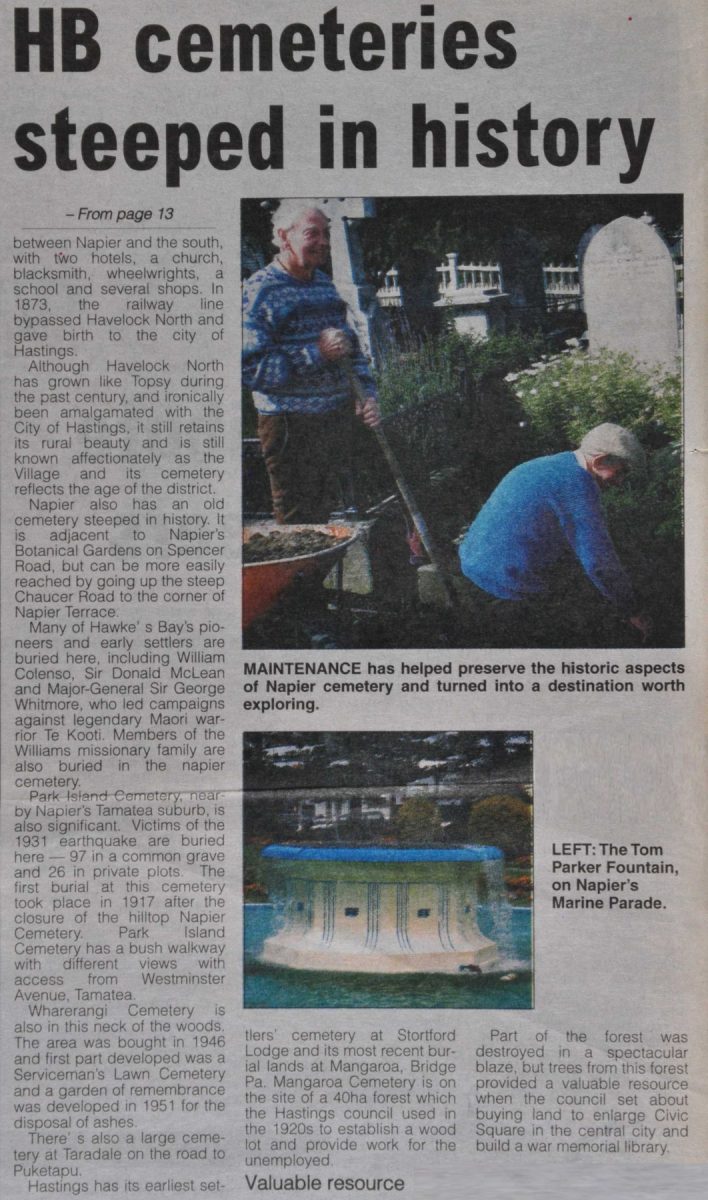Prisoner’s hard graft created place of beauty
Adjacent to Mangaroa Cemetery is Hawke’s Bay’s Mangaroa Prison, which replaced the historic jail about 100m up Coote Road; on Napier’s Bluff Hill. The old Napier prison frontage is stone block and resembles the notorious Mt Eden Prison in Auckland.
Opposite the old Napier jail is a unique garden created from a disused prison quarry. Prisoners worked on the cliff face sending boulders crashing to the quarry floor where prisoners below broke the boulders with sledgehammers. Now a man-made waterfall drops 10m over the terraces where the prisoners used to work.
A bridge crosses a deep pool and water gushes through a series of gorges made from quarry stone. The gardens are a blaze of colour contrasting well with the norfolk pines which line the neighbouring Marine Parade.
The first of the norfolk pines, a landmark in Napier, were planted on Marine Parade in 1886. The following year, after severe storms and more flooding, a concrete seawall was built.
In 1893 a loan of $70,000 provided for extensions to the seawall and footpaths, gardens and a children’s play area along Marine Parade. After the 1931 earthquake rubble and masonry from the earthquake ruins were used to raise the land south of the Sound Shell. The parade was divided into two carriage-ways and the norfolk pines were retained, but were now in the central dividing strip of the road.
Between the Wool Exchange building, along the north end of Marine Parade and Coote Road there is testimony to how early Hawke’s Bay was regularly devastated by flooding. There is a stone memorial to people who died in Clive in a severe flood of 1863.
Town clocks
Today, it is in perhaps the worst repair of any monument in Napier or Hastings, yet floods will always be on the cards for the district because much of the twin cities housing, or urban development, is on what was once the course of rivers.
Other statues and monuments in Hawke’s Bay include town clocks.
The Hastings town clock was designed by Hastings architect S G Chaplin to replace the clock in the Post Office tower which crashed to the ground in the 1931 earthquake, killing Herald-Tribune reporter Darby Ryan. The chimes were used in the new clock which was built in 1934.
The town clock in Havelock North was built into the “rest house” in 1915. This public loo is a notable example of Chapman-Taylor architecture and sits in the centre of the Village. The building originally housed the transformer when electric power reached Havelock North. The clock was bought from the Hastings City Council in 1937.
Taradale’s town clock was completed in 1923. After the 1931 earthquake the clock tower resembled the leaning tower of Pisa because it was tipped from vertical with a 60cm lean. The damage was later repaired.
Photo caption – PART of Napier’s Centennial Gardens.














Do you know something about this record?
Please note we cannot verify the accuracy of any information posted by the community.